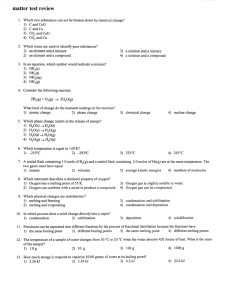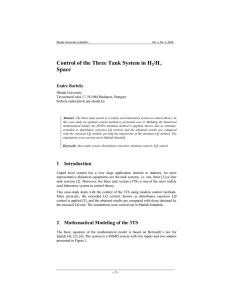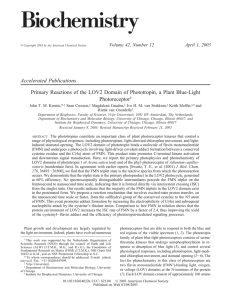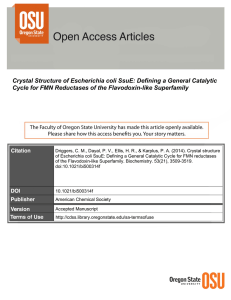Ext above the b line Haynes Miller January, 2009
advertisement
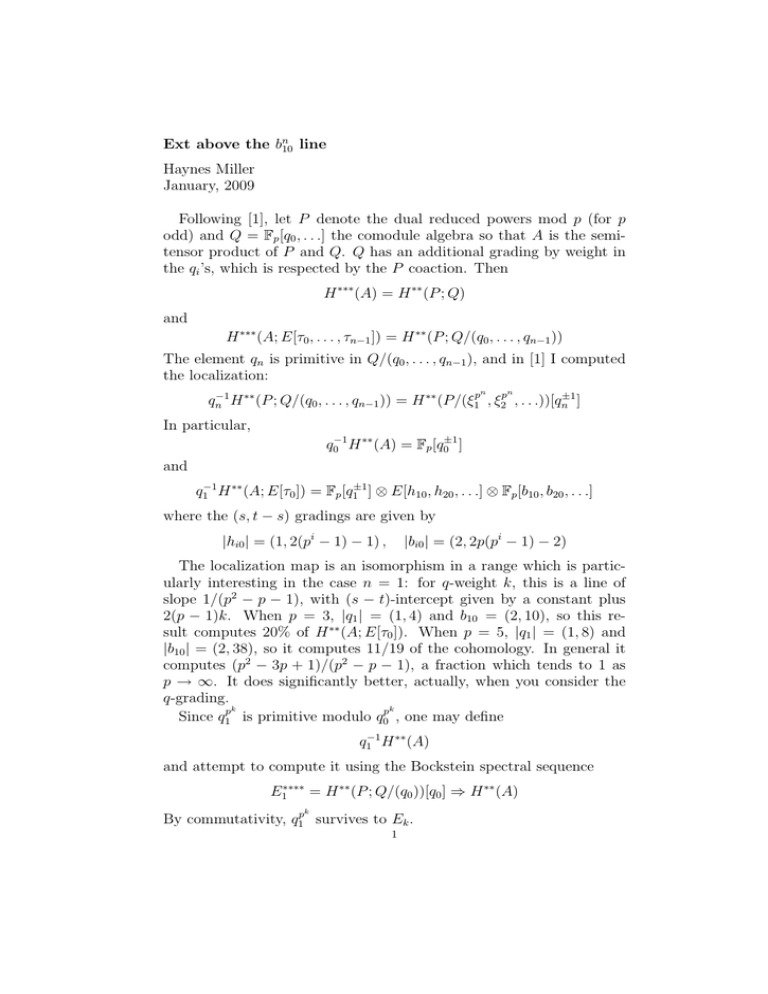
Ext above the bn10 line Haynes Miller January, 2009 Following [1], let P denote the dual reduced powers mod p (for p odd) and Q = Fp [q0 , . . .] the comodule algebra so that A is the semitensor product of P and Q. Q has an additional grading by weight in the qi ’s, which is respected by the P coaction. Then H ∗∗∗ (A) = H ∗∗ (P ; Q) and H ∗∗∗ (A; E[τ0 , . . . , τn−1 ]) = H ∗∗ (P ; Q/(q0 , . . . , qn−1 )) The element qn is primitive in Q/(q0 , . . . , qn−1 ), and in [1] I computed the localization: n n qn−1 H ∗∗ (P ; Q/(q0 , . . . , qn−1 )) = H ∗∗ (P/(ξ1p , ξ2p , . . .))[qn±1 ] In particular, q0−1 H ∗∗ (A) = Fp [q0±1 ] and q1−1 H ∗∗ (A; E[τ0 ]) = Fp [q1±1 ] ⊗ E[h10 , h20 , . . .] ⊗ Fp [b10 , b20 , . . .] where the (s, t − s) gradings are given by |hi0 | = (1, 2(pi − 1) − 1) , |bi0 | = (2, 2p(pi − 1) − 2) The localization map is an isomorphism in a range which is particularly interesting in the case n = 1: for q-weight k, this is a line of slope 1/(p2 − p − 1), with (s − t)-intercept given by a constant plus 2(p − 1)k. When p = 3, |q1 | = (1, 4) and b10 = (2, 10), so this result computes 20% of H ∗∗ (A; E[τ0 ]). When p = 5, |q1 | = (1, 8) and |b10 | = (2, 38), so it computes 11/19 of the cohomology. In general it computes (p2 − 3p + 1)/(p2 − p − 1), a fraction which tends to 1 as p → ∞. It does significantly better, actually, when you consider the q-grading. k k Since q1p is primitive modulo q0p , one may define q1−1 H ∗∗ (A) and attempt to compute it using the Bockstein spectral sequence E1∗∗∗∗ = H ∗∗ (P ; Q/(q0 ))[q0 ] ⇒ H ∗∗ (A) k By commutativity, q1p survives to Ek . 1 2 Christian Nassau’s computation indicates the following pattern of Bockstein differentials. As usual we’ll leave the power of q0 undenoted. We will use the notation pn − 1 p[n] = p−1 so that p[0] = 0, p[1] = 1, p[2] = p + 1, . . .. dp−1 (q1−1 h10 ) = q1−p b10 [2] [3] dp2 −1 (q1−p h20 ) = q11−p b20 [3] [4] dp3 −1 (q1−p h30 ) = q11−p b30 .. . d1 q1 = h10 dp[2] q1p = q1−1 h20 2 [2] dp[3] q1p = q1−p h30 .. . k−1 dp[k] q1p [k−1] = q1−p .. . [k] [k+1] dpk −1 (q1−p hk,0 ) = q11−p .. . hk,0 bk,0 k Since q1p survives to a cycle in Epk −1 , we may multiply the right hand k calculation by q1p if we like. For example when p = 5, d1 q1 = h10 d6 q15 = q1−1 h20 d31 q125 = q1−6 h30 .. . d4 (q14 h10 ) = b10 d24 (q119 h20 ) = q1−5 b20 d124 (q194 h30 ) = q1−30 b30 .. . One may also inquire about the smallest q1 -multiple of an element in the image of the localization map. For example the subalgebra generated by h10 and b10 is in the image already. When p = 5, it seems that q1 h20 is in the image but none of the elements of the form bk10 h20 or bk10 h10 h20 are. It seems that q16 b20 is the first q1 multiple in the image, and q16 h30 . References [1] H. R. Miller, A localization theorem in homological algebra, Math. Proc. Camb. Phil. Soc 84 (1978) 73–84.


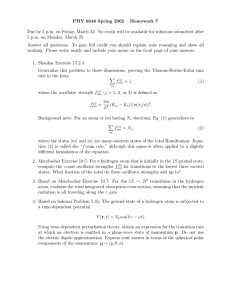

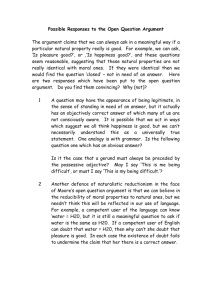
![M&M Lab Report Template [11/1/2013]](http://s3.studylib.net/store/data/007173364_1-88fa2a4b33d860a6d8d06b9423fde5c0-300x300.png)
